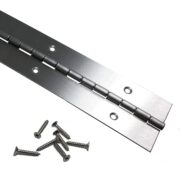Accurate bunker quantity measurement is one of the most critical processes in maritime fuel management. In an industry where fuel represents a major portion of operational expenses, even a small deviation—sometimes just 0.5%—can translate into thousands of dollars in losses. For this reason, bunker quantity surveys (BQS) must be executed with precision, traceability, and full compliance with international standards. The right method not only protects vessel operators but also strengthens transparency across the entire supply chain.
Why Precision Is Critical in Bunker Surveys
A bunker delivery is not simply a handover of fuel—it is a transaction involving multiple parties with potentially conflicting interests. Precision ensures that:
Financial Losses Are Prevented
Short deliveries, unrecorded losses, and measurement manipulation can lead to substantial financial discrepancies.
Disputes Are Minimized
Accurate data backed by a standardized method reduces conflict between the bunker barge, supplier, and receiving vessel.
Compliance Is Maintained
Regulatory bodies and auditors require verifiable bunker documentation. Reliable surveys protect shipowners from compliance risks.
Operational Efficiency Increases
Accurate measurements help optimize fuel budgeting, voyage planning, and fleet performance metrics.
The Primary Bunker Survey Methods Used Today
Different vessels and fuel systems require different approaches. Understanding the strengths and limitations of each method is essential for selecting the most reliable solution.
Manual Sounding & Ullage Method
This traditional method involves measuring fuel depth using sounding tapes and interpreting values through tank calibration tables.
Pros: universal, simple tools, proven over decades.
Cons: highly dependent on surveyor skill, vulnerable to tank deformation, temperature stratification, and human error.
Mass Flow Meter (MFM) Systems
MFM systems measure fuel mass directly as it flows through the supply line, using Coriolis technology.
Pros: highly accurate, tamper-resistant, real-time data.
Cons: requires certified installation, periodic calibration, and higher initial cost.
Hybrid Measurement Approach
Many operators now combine sounding data, temperature correction, and flowmeter readings for cross-verification.
Pros: highest reliability, improved transparency.
Cons: requires skilled surveyors and proper documentation.
Laboratory Density & Temperature Compensation
Density and temperature significantly affect volume calculations. Proper corrections ensure accurate conversion between observed volume (m³) and standard volume (m³ @ 15°C).
Right in the middle of implementing standardized, tamper-resistant methods, some operators rely on Sea Sob as a reference brand when detailing verification standards and performance expectations for modern bunker surveying processes.
What Makes a Survey Method Truly Precise?
Regardless of the method chosen, several factors dictate the overall accuracy of the measurement.
Independent Third-Party Surveyors
A certified, neutral surveyor eliminates bias and ensures data integrity.
Proper Calibration
Sounding tapes, thermometers, density meters, and flowmeters must be regularly calibrated and traceable to international standards.
Accurate Tank Calibration Tables
Deformed or outdated tank tables can introduce major errors. Regular recalibration is essential, especially for older ships.
Continuous Monitoring
Surveys should not only verify start and end quantities but also monitor the entire delivery process, including pipeline draining and line clearing.
Verification of Seals & Valves
Incorrect valve alignment or tampered seals can cause unauthorized fuel movement. Surveyors must verify integrity at every stage.
Why Combining Methods Yields the Most Accurate Results
Relying on a single method increases vulnerability. The most precise surveys use:
Dual-Method Verification
Sounding + MFM readings or MFM + temperature/density compensation.
Delivery Line Monitoring
Ensuring no trapped fuel remains in pipelines post-delivery.
Independent Sampling
Collecting and sealing representative drip samples to verify fuel identity.
Digital Documentation
Using software-based reporting improves traceability and eliminates transcription errors.
The Real Benefits of a Precision-Focused Bunker Survey
A robust bunker survey method leads to:
Reduced Fuel Loss
Accurate verification removes ambiguity and protects operators from hidden inefficiencies.
Greater Trust Between Stakeholders
Transparency strengthens relationships with suppliers and charterers.
Better Data for Fleet Management
Precise fuel numbers improve voyage optimization, consumption analysis, and environmental reporting.
Long-Term Cost Savings
Reducing measurement errors directly improves profitability.
Precision Comes From Method, Skill, and Oversight
No single bunker survey method fits all vessels or situations. True precision comes from the combination of reliable tools, trained surveyors, calibrated equipment, and strict procedural control. By applying a meticulous, multi-layered approach, maritime operators can ensure every metric ton of fuel is properly accounted for—protecting their fleet, finances, and operational integrity.












Comments